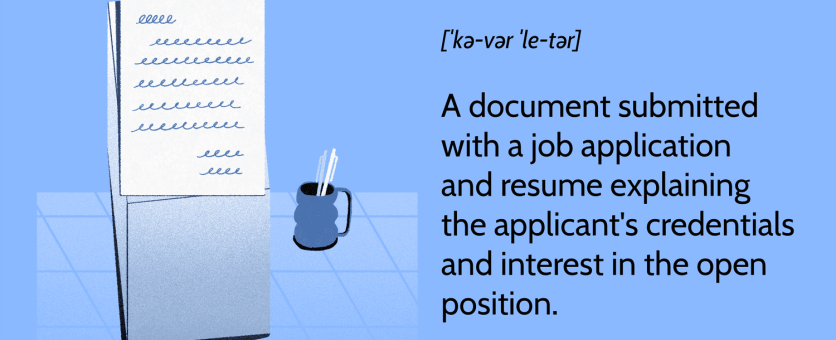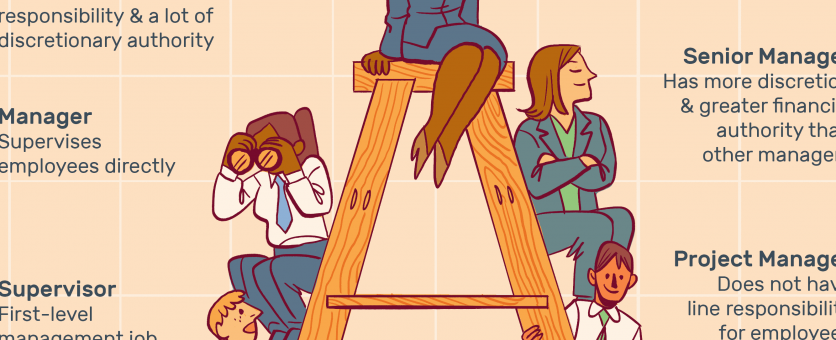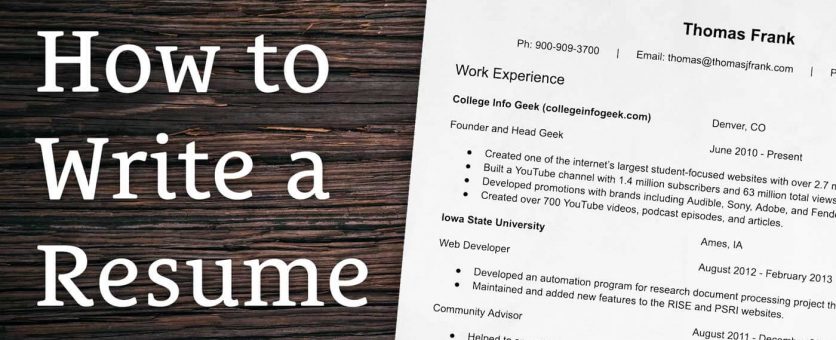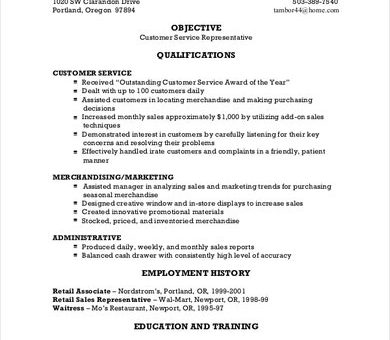How do individuals truly uncover job opportunities—particularly those that are fulfilling and significant? There’s a plethora of career guidance available… some beneficial, some obsolete, and some completely contradictory. It can be challenging to know où commencer, especially if you’re just starting your professional journey. That’s why we’ve crafted this resource: to clarify the essentials of job searching and offer practical strategies for tackling it. For those who have a general idea of the type of work they aspire to and how it meshes with their values, this resource will assist you in navigating the employment search process step by step. We’ll discuss everything from spotting opportunities to composing compelling applications, facing interviews, and negotiating offers. If you’re still contemplating career pathways or considering the societal impact of various choices, we suggest beginning with our career guide first. But if you’re set to secure your next position, let’s get started. Consider a diverse range of possibilities. Your perfect position may have a different title or be found within a sector you haven’t yet envisioned. Job titles differ from one organization to another, so searching based on abilities and responsibilities (instead of previous job titles) can uncover new possibilities. Do a reverse search on companies and institutions you respect, reviewing their career pages—rather than just job boards—to find unexpected positions that align with your skill set and uncover what types of roles are available. Job boards are a great initial point, but the most effective approach combines broad exploration with proactive networking and research. Keeping an open mind can direct you to a position that’s an even better match than you initially imagined. Cultivate a network you’ll genuinely utilize. Networking is less about amassing contacts and more about fostering meaningful relationships that can create opportunities in surprising ways. Rather than forcing uncomfortable engagements, prioritize authentic connections with individuals whose work you admire, beginning with those you already know. Participate in environments where engaging discussions occur, whether it’s industry gatherings or online forums, and feel free to reach out with thoughtful, specific communications. Seek guidance rather than job offers, ask for introductions when appropriate, and be sure to effectively leverage your network when searching for prospects. Draw in opportunities. Instead of merely applying to roles, you can position yourself to attract opportunities to you. Establish a visible presence through an updated LinkedIn profile, a personal website, or public projects to give people a clearer insight into who you are and what you’re capable of. Engage in communities—whether through Slack groups, mentorship initiatives, or events—to naturally expand your network. If you’re a student or recent graduate, capitalize on that status to connect with professionals via research, clubs, or conferences. Treat job applications as both a numbers game and a strategic endeavor. Focus on positions that genuinely align with your skills and experience, and compose thoughtful, customized applications without overanalyzing every aspect. […]
28 Proofreading Tips to Help You Make Your Resume Better
1. Plan it out. Devoting time and focus to proofreading is crucial. Allocate a minimum of an hour for your review in a distraction-free environment. 2. Approach with clarity. Tackle your edits after recharging, such as following a restful night. It’s beneficial to step away from your resume for a bit; if you compose at day’s end, consider proofreading the next morning. 3. Be thorough. Utilize the spell check feature available in your writing software, but don’t solely rely on it. While it can identify many typos, it may overlook grammatical errors or instances of incorrect word use. 4. Assess your font. Prior to proofreading, ensure you’re using a clear, legible font. Safe options include Calibri, Cambria, Garamond, and Helvetica. Steer clear of excessively ornate fonts like Comic Sans, Brush Script, or Papyrus. 5. Print it. Review your resume on a printed document instead of on a screen. Our minds tend to skim text on computers, tablets, or phones without sufficient depth. Using a colored pen can help highlight your revisions effectively. 6. Examine each word. Track your reading with your finger, going one word at a time. Though it may seem slow, this method encourages a more careful reading process. 7. Review by segment Rather than scanning your entire resume in one sweep, concentrate on one section at a time—be it headings, bullet points, or dates. 8. Read quietly. Silently read your resume in a deliberate manner, savoring each word. 9. Vocalize your review. Articulate your resume out loud. Initially it may feel offbeat, but vocalizing every word emphasizes awkward phrasing and typographical errors. If you struggle with your speech, your audience may do the same. 10. Reverse for spelling checks Starting from the conclusion of your resume, trace each line backward and focus solely on the spelling aspect. 11. Alter font for review Generate a copy of your resume in a different font. If you usually use Calibri, switch to a serif font like Times New Roman for proofreading. This minor alteration can unveil errors that were previously unseen. (Tip: Duplicate the document and modify the font in the duplicate to avoid altering the original’s formatting.) 12. Document recurring errors. Compile a list of frequent mistakes encountered while proofreading and utilize the ‘Find’ function (Ctrl+F for PCs, Command+F for Macs) in your final revision to ensure each mistake is identified. 13. Verify usage of small words. Pay close attention to small words: terms like “or,” “and,” “it,” and “is” are commonly mixed up. 14. Assess contractions and possessive forms. Be watchful regarding contractions and possessive forms. It’s common for people to intermix there, their, and they’re; you’re and your; or its and it’s, among others. 15. Inspect verb tense. Ensure your verb tenses are correct. Use the past tense for previous jobs (e.g., ‘Coordinated team-building events’) and present tense for your current role (e.g., ‘Report on program results to senior management’). Maintain tense consistency across bullet points within the same position. 16. Attend to details. Examine your adherence to formatting norms like capitalization, punctuation, spacing, and bullet consistency. Ensure you’ve uniformly decided whether to finalize bullet points with periods. 17. Confirm word selections. Clarify your word choices, especially those with ambiguous meanings or business jargon. Use online dictionaries and thesauri to expand clarity, opting for active verbs to invigorate your resume. Avoid using words you do not fully comprehend. 18. Test hyperlinks. Verify any hyperlinks (e.g., email addresses, articles) embedded in your resume contact details or cover letter to ensure they function correctly. 19. Watch for homophones. Be cautious of homophones—words that sound identical but differ in spelling and meaning. Errors like mixing “accept” and “except” or “role” and “roll” can dramatically alter the sentence’s meaning and tarnish your reputation. Make sure to differentiate between affect and effect as well. […]
What is a cover letter?
A cover letter is a concise document, usually spanning three to four paragraphs, that acts as an introduction to your job application or resume. It provides a chance to convey your enthusiasm for a company and role while showcasing what you can contribute to its culture and team dynamic. This letter also allows you to elaborate on your most pertinent experiences, skills, and qualifications detailed in your resume, positioning you as a top contender. An exceptional cover letter reflects your individuality and excitement for the opportunity. It narrates your journey, explaining your experiences and why you are exceptionally suited to address the needs highlighted in the job description. It serves as a crucial component of a job application that can persuade hiring managers to explore your resume further and call you in for an interview. Why is a cover letter essential? For those seeking employment, a cover letter can significantly influence the first impression made on recruiters and hiring authorities. Employers often have limited time to delve into each resume thoroughly. A thoughtfully crafted cover letter can tip the scales in encouraging recruiters to peruse your resume in detail and advance you in the hiring process. Compelling cover letters can demonstrate not only your interest in the role but also how you can meet the specific demands of the position. This letter is your opportunity to exhibit your skill set, present your professional journey, and leave decision-makers eager to discover more about you. Cover letter suggestions An effective cover letter can enhance your job application’s potential. Keep these tips in mind while crafting your letter to create an impactful and well-composed document. Utilize a clear and personalized greeting. Start your cover letter with a formal and suitable salutation. If you know the hiring manager’s name, feel free to address the letter directly to them. If not, you can use a greeting like Dear Hiring Manager, along with relevant details such as the name of the company, the job title, and your contact information. This indicates which role you’re applying for and illustrates that you’ve made an effort to tailor your letter accordingly. Capture attention The opening paragraph of your cover letter should seize the attention of hiring managers or recruiters and encourage them to read on. Therefore, your introduction should be compelling, providing essential details about what you bring as a candidate. Consider including noteworthy achievements, referrals from a mutual connection, a declaration of your passion for your career, or a belief statement that showcases your dedication. Follow up your introduction by explaining your desire to apply for this role and why you consider yourself a fitting candidate. Mention specific qualifications, values, or traits that resonate with the job and the company’s culture. Demonstrate enthusiasm for the role and organization. Your cover letter should vividly express excitement for both the job listing and the enterprise. A focused job search that centers on positions and companies you genuinely care about will help your enthusiasm emerge naturally. Use the body of your letter to outline why you are enthusiastic about the position and reinforce this with specific examples connecting your background to the job. Showcase your personality. Numerous organizations now rely on online applicant tracking systems (ATS) to filter resumes, which generally perform better with straightforward, bullet-point structures emphasizing qualifications and experience. Such formats can restrict the conveyance of your personality. This is where your cover letter shines. In contrast to your resume, which might use bullet points, the body paragraphs of your cover letter allow for storytelling, giving you the chance to genuinely reflect your personality and highlight your written communication skills. Utilize this opportunity to include specific instances of how your professional background has formed you into a formidable candidate for the role. A well-crafted cover letter can also convey your values, beliefs, and dedication—especially if they align with the mission of the organization. Emphasize your top qualifications. Choose one or two of the most relevant abilities from your resume and intricately weave them into your cover letter with rich detail and specific examples that clarify what you can bring to the company. Besides role-specific credentials, don’t hesitate to spotlight transferable skills like teamwork or collaboration, which are valuable across various industries and roles. Use your qualifications and experience to demonstrate how you’ve contributed to employers in the past and how you are uniquely positioned to support this company’s mission and values. Using your cover […]
10 profile interview questions and guides to responses
In a job interview, an employer may pose questions aimed at understanding your professional identity as a potential employee. The following illustrative questions and answers can assist you in gearing up for your interview: 1. Picture yourself as the CEO of our organization. What changes would you implement? This thought-provoking question can provide interviewers essential perspectives on your familiarity with their company. To get ready, investigate the organization and understand the challenges it faces in the market, offering suggestions on how you would enhance its operations. When responding, maintain a composed and optimistic demeanor to demonstrate your ability to remain courteous under pressure. 2. What will you do if you aren’t selected for this position? This inquiry could indicate to the interviewer that you have mapped out your career aspirations to align with your objectives. Your response should highlight your capability to strategize, reflect on your skills, and establish goals that further your progress. Although you might want to avoid negativity in an interview, you can illustrate your pragmatic outlook by discussing how you plan to keep advancing in your career if this opportunity does not materialize. 3. Share your strengths beyond your professional life. The interviewer might inquire about your personal pursuits outside of work to assess your skills and your ability to tackle challenges in your daily life. Discuss traits that illustrate attributes employers seek in candidates, such as punctuality, organization, dependability, and enthusiasm. Aim to include strengths that would assist you in thriving in the desired position. 4. Who has been your greatest source of inspiration? The interviewer may wish to learn about influential individuals in your life who have inspired you to achieve success and pursue your ambitions. In your response, explain how this person has mentored, guided, or encouraged you in your career goals. You may also share specific instances in which your mentor fostered your growth. 5. What would have encouraged you to remain with your previous employer? This question can offer the interviewer insight into the various factors that keep you engaged and productive at work. They might also be interested in understanding what their company could do to retain skilled employees. Use your answer to mention one or two favorable aspects of your last organization, along with an example of something you would enhance. You can also take this chance to articulate why the new position might suit you well. 6. What do you feel passionate about? Questions regarding your interests can provide the interviewer with a sense of your motivation and ability to stay engaged with projects and responsibilities. Describe personal interests you pursue and underscore how these passions contribute to your skill enhancement and learning. Aim to identify relevant passions that link back to your role. 7. When was your last trip? Even if traveling is not a job requirement, the interviewer might want to understand how you embrace diversity and organize itineraries. Illustrate your planning skills with examples of how you organized your most recent trip and highlight experiences that offered you fresh perspectives and new learning opportunities. You can also use this chance to share positive personal experiences that have influenced your career trajectory. 8. How frequently do you establish personal goals? Setting personal development goals is just as crucial as professional ones, and the interviewer may want to ensure that you are proactive in maximizing your potential in both areas. Discuss any goals you have for enhancing a particular aspect of your life and the measures you are taking to realize success. You can also connect these personal objectives to your career ambitions. 9. Describe a time when you acted on a fresh idea. An interviewer may ask this question to assess how you transform ideas into actionable plans and achieve results. Share examples of concepts you have implemented in the past to reach an outcome, such as completing further education, acquiring a new skill, or devising an alternative strategy for a specific task. Highlight the advantages of executing a new idea, even if it seemed daunting at first. 10. What is one of the most profound lessons you’ve learned in your life? In an interview, the employer may seek ways to evaluate how you respond to stressful situations and resolve issues. In your answer, utilize the STAR technique to illuminate the situation, the specific task, your actions, and the outcomes. This can illustrate to the interviewer that you are capable of reflecting on your past experiences to enhance your future performance.
Ten Pay-Per-Click (PPC) Metrics You Can Monitor and Their Advantages
1. Number of clicks Monitoring the frequency of clicks can serve as a crucial indicator for assessing user engagement with your material, as it indicates how frequently your audience interacts with your paid promotions. The total click count can provide valuable insights regarding the efficacy of your advertisements. For instance, a sparse click count may suggest that your selected keywords are not resonating with users. Modifying these keywords could enhance customer engagement with your material. 2. Cost per lead (CPL) Assessing cost per lead helps you evaluate the effectiveness of your ads in eliciting responses from prospective customers. A lead constitutes a sign-up element such as an email address or contact details, enabling you to connect with individuals who have a clear interest in your offerings. Analyzing cost per lead permits you to assess the worth of a lead in relation to your expenditure for acquiring their information. 3. Profit per click Profit per click denotes the average earnings generated per click. This metric can be valuable in determining your revenue from user interactions. If users click on your content without ultimately making a purchase, this can depress your average profit per click figures. It can also assist in tracking more specific factors within your campaigns, such as how distinct keywords, platforms, audience demographics, and ad variations impact your profits. 4. Click-through rate (CTR) CTR is a valuable metric for assessing the impact of your ads, as it reflects whether your ad or keyword choices align with your target audience’s search intentions. A high CTR suggests that your content is engaging and relevant, indicating effective keyword optimization. Nonetheless, click-through rates provide only a partial view. It’s beneficial to correlate them with other metrics like your conversion rates. For example, a high CTR but a low conversion rate may indicate a need to reassess your landing page to identify why customers are not completing their purch. 5. Conversion rate Monitoring conversion rates can provide you with insightful data regarding whether user clicks lead to sales. The conversion rate quantifies your success in persuading customers to purchase your product or service. Consider juxtaposing the conversion rates of your PPC campaigns with your alternative advertising methods. This can ensure PPC remains the most effective marketing strategy for engaging your target audience. A large number of clicks paired with a low conversion rate can suggest that customers lose interest after arriving at your landing page. Since most businesses aim for high conversion rates and sales, grasping this metric can yield significant insights into the effectiveness of your campaigns. 6. Cost per conversion Cost per conversion assesses your conversion rates, extending the evaluation to how much revenue you generate from these conversions. Although achieving high sales is thrilling, if your earnings from conversions fall short of your campaign expenses, it might be time to reconsider your content or marketing strategies. Conversely, if the expense of converting a new customer is lower than the cost of advertising to them, it indicates a successful campaign. 7. Return on investment (ROI) Return on investment serves as an additional measure for contrasting your profits against your advertising spend. To calculate your ROI, users divide their revenue by the expenditure on the PPC campaign. Multiplying this figure by one hundred provides your ROI percentage. This can assist in analyzing the profitability of campaigns and reveal insights beyond what a metric like cost per lead alone can present. Consider evaluating the value of different types of conversions to garner more specific data points for your ROI analysis. For example, if specific keyword searches or audience segments result in higher expenditures, you can concentrate your marketing efforts on amplifying those sales that yield superior ROIs. 8. Cost per action (CPA) Cost per action, or CPA, is yet another metric for examining your financial performance on a specific advertisement. Low CPAs indicate that you are utilizing pertinent and cost-efficient keywords that generate strong returns. This metric assesses any action performed by your customers, which could range from sign-ups to sharing, commenting, or making purchases. Different actions often hold varying significance for marketers, based on their business objectives and aims. 9. Quality rating Quality ratings can provide you with crucial insights about the significance of your content, keywords, and landing pages. Search engines frequently produce quality ratings, and this data can reveal areas where your campaigns might improve. Like many metrics, quality ratings in isolation may not give a comprehensive view of your ads’ success rates. For instance, an ad that boasts a high quality rating but has a low conversion rate may suggest that your audience is noticing your ads but isn’t necessarily engaging with your content. While quality ratings can serve as a valuable measure, enhancing your quality rating may not translate to increased conversion rates or lower CPA figures, which is ultimately where you should concentrate your endeavors. 10. Visibility share Visibility shares can indicate how frequently your audience encounters your content after conducting a search with a particular keyword. Visibility shares can serve as an insightful metric for identifying potential optimizations within your campaigns. Occasionally, investing more in your ads can ensure your content consistently reaches your intended audience. Evaluating visibility shares against other indicators like CPA and ROI can help determine if further investments are justifiable. For example, if your conversion rates are elevated, it may signal that it’s time to broaden your audience and align your content with their keywords more often. Understanding the relevance, popularity, and scope of your keyword selections can assist in confirming that you’re targeting appropriately sized keyword groups. Advantages of monitoring PPC metrics For marketers, monitoring PPC metrics proves advantageous as it enables enhancements in digital marketing strategies, evaluates the performance of advertisements, and supports the company’s search engine optimization (SEO) initiatives. This practice guarantees that your ads effectively boost sales and assist your organization in achieving its objectives. Robust analytics permit you to oversee the success of a PPC campaign, ensuring that you are effectively connecting with your intended audience. Performance analytics also assist in pinpointing strengths and identifying aspects needing improvement in your campaigns, allowing you to refine
10 Office Suite Software Choices To Enhance Efficiency
Software suites can significantly boost your productivity, organization, and overall effectiveness, ultimately helping to further your career. Below is a compilation of ten office software suites along with their features that you can utilize in your professional environment: 1. Zoho Workplace Zoho Workplace is a collection that provides productivity applications. With this suite, you can collaborate with coworkers from remote locations. Its design is free from clutter, and you can customize it with various layout options and themes. Zoho Workplace also includes file management, presentation, online training, meetings, and word processing functionalities. 2. LibreOffice LibreOffice is an office suite focused on data administration. This software boasts dynamic charts, real-time data sheets, and a plethora of statistical and banking functions to assist you in crafting formulas and performing complex calculations. With this program, you can calculate, manage, arrange, filter, and store data, making it easier to organize and share your company’s information. The suite also allows you to work collaboratively with team members on spreadsheets. 3. OnlyOffice OnlyOffice offers tools for documents, presentations, and spreadsheets. It’s an open-source office suite that enables users to create, collaborate on, and securely edit business documents online. OnlyOffice can also integrate with additional programs, such as collaboration platforms, email, and customer relationship management software. It’s compatible with multiple operating systems, allowing team members to utilize their preferred platforms effortlessly. 4. Google Workspace Google Workspace lets you create documents, spreadsheets, slides, and forms. This online office suite provides 15 gigabytes of free storage with real-time data synchronization. Team members can simultaneously collaborate on the same project. It integrates with various external applications and is accessible on both Windows and Mac. 5. Apache OpenOffice Apache OpenOffice is a full-featured office suite that includes a robust word processor, an autocorrect dictionary, and an intuitive drawing tool. Users can work with slideshow animations and effects and even send spreadsheets directly as PDF files. This suite is perfect for writers and creatives, facilitating easy writing, drawing, and engagement in other artistic projects. 6. Corel WordPerfect Office Corel WordPerfect Office is a thorough suite suitable for home and office use. It comes with an integrated PDF package that simplifies the creation of letters, envelopes, and forms. This software excels in crafting formal documents and contracts, allowing for margin and font manipulation to produce visually appealing correspondence. It’s ideal for professionals specializing in document design. 7. Apple iWork Apple iWork is another comprehensive office software suite that enables users to create documents, spreadsheets, and presentations. It provides several Apple-designed document templates to enhance your organization, whether you’re in or out of the office. Its word processor, Pages, aids in creating professional documents, while Keynote allows for presentation creation. Utilizing the software and its features can help you articulate your ideas more clearly and improve your presentation skills. 8. Ashampoo Office Free Ashampoo Office Free serves as a no-cost alternative to other office suites. It offers essential office suite functionalities, enabling the creation of letters, flyers, and scientific papers. The PlanMaker tool simplifies mathematical tasks using over 330 built-in calculations, and it can also be employed for data management spreadsheets. This software is portable, allowing installation on external storage devices such as USB drives for working on the go. 9. WPS Office Free WPS Office provides the three fundamental functionalities expected from an office software suite, including word processing, spreadsheet creation, and presentation development. It operates on a variety of operating systems. This software option is also portable, making it ideal for frequent travelers who need to swiftly produce documents and presentations. Additionally, it features more than 50 keyboard shortcuts. 10. Microsoft Office Microsoft Office presents a wide array of templates and possesses diverse features and functionalities. Microsoft Office products facilitate the rapid creation, storage, and sharing of documents. It includes advanced word processing software, Word, and a comprehensive spreadsheet creator, Excel. With numerous features and customization options, Microsoft Office is user-friendly and familiar to many, featuring an intuitive interface. The software also receives regular updates. Please be advised that none of the companies mentioned in this article have any affiliation with Careerz.
The Top 10 Places for Networking
Networking: What is it? Building business relationships with people in a field is known as networking. Through networking, you can get useful advice on how to get better in your career in addition to finding job opportunities. Additionally, networking can help you form friendships with experts who share your interests, […]
A guide to middle management positions
A guide to middle management positions As you move up the company ladder, you may find yourself in a middle management position. While working in such a role, you are responsible for the productivity and success of junior-level employees. You may also work as someone who relays the messages of […]
How to Write a Resume
Write the Perfect Resume in No Time Let’s face it: writing a resume can be intimidating. And the pressure to make it really sing can make the prospect of putting fingers to keyboard that much scarier. But writing the perfect resume doesn’t have to be terrifying. In fact, it can be easy—if you know what […]
How to Write a Career Objective with Examples
Understanding career objective examples When you apply for a new job, it’s important to read through your resume to ensure it aligns with the job description and, ultimately, what you’re looking for in a position. Writing a career objective at the top of your resume can be particularly helpful as an entry-level […]






